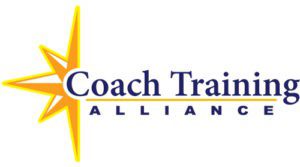Author: Christina Stathopoulos, PCC. A reblog from ICF.
Millennials are about to make up over half of the world’s workforce. Being able to effectively coach them will become paramount to the sustainability of any coach’s practice. And, overgeneralizing the common issues associated with working with millennials can inhibit a powerful relationship between coach and client. This article is intended to support coaches in navigating their issues with millennial clients and offer new insights on how to distinguish any age biases that may be inhibiting deeper relationships.
As a bonus, this article is being written by a 27-year-old millennial woman, who also happens to be a Professional Certified Coach with a robust practice. So, if you are a coach interested in distinguishing your current age biases, learning how to take responsibility for them, and applying new methods to your coaching, then keep on reading.
What is a Millennial?
What is a millennial? I encourage you to think about your answer to that question, and possibly even jot it down before you continue reading.
Most simply put, millennials are a demographic cohort born between the years 1981 and 1996.
The Problem with “How”
You might have a lot of questions about how to be a life coach for millennials, but there are a few easy ways to get it going. Coaches crave “how-tos” when it comes to working with millennials.
They believe this will make the coaching more effective.
They believe this will make working with millennials easier.
Ultimately to seek the how-to first will cause coaches to make the mistake of focusing more on their own performance than on “what” and “who” of the clients they work with.
Expertise will always be of value, but the default among coaches is to move forward on expertise and operate on top of the undistinguished biases they bring into their relationships with their millennial clients.
Think about it through the lens of the ICF Core Competencies. To rely on tips tricks, or how-tos to coach a client, means to be unwilling to be flexible during the coaching process. It eliminates the space to not know and take risks. It also then requires the coach to listen through their own agenda of “How is this response reflective of this person being a millennial?” versus any more open-ended or curious lens.
My assertion is that “how” kills the partnership between coach and client.
“How” Without Performance
Consider that the most effective way to work with millennials comes in these three steps:
- Distinguishing your own age bias
- Taking responsibility for that age bias to have it out of the space held for a client
- Applying new techniques and methods to coaching
Skipping straight to #3 will cause that focus on performance previously mentioned.
Distinguishing Your Own Age Bias
To start, revisit your answer to the question, “What is a millennial?” Consider that anything you included in your answer beyond the range of birth years points to what your bias is.
Remember that bias doesn’t necessarily mean negative. However, if you want to be a life coach for millennials you must understand and negate your own bias. If you are stuck or unsure, here are some common examples:
“Millennials crave instant gratification.”
“Millennials are great with social media.”
“Millennials rebel against older leadership styles.”
“Millennials need friends and family to give them career advice.”
“The most important goal for a millennial is work/life balance.”
Taking It Out of the Space
Once you have distinguished the age biases that you have around working with millennial clients, you must practice putting those biases aside. One way to practice this is to listen to your own coaching of millennials through the lens of Coaching Presence. For example, you can check in on:
- Where am I asking this question from? – Are my lines of inquiry reflective of being completely connected to the client and curious?
- How much of the client am I listening to? – Am I trying to fit my client into assumptions I have about how they view career/life/leadership? Or am I truly listening to who they are and their experience?
- What am I right about? – Which techniques or methods am I redundantly applying with the same client repeatedly? Why am I attached to those methods?
Applying New Techniques
With your age biases distinguished and out of the space, you can give yourself permission to seek out techniques again. And, you will undeniably notice a difference in how you hold those techniques.
With age bias undistinguished and running rampant, how-to becomes a coach’s beacon for how to fix their coaching or fix their clients.
With awareness and responsibility, how-to is merely a tool to broaden a coach’s skills and abilities. There will be far less pressure to have the correct solutions and answers.
In conclusion, curiosity remains your best tool available to you when coaching millennials. Taking on the practices and techniques that hone your Coaching Presence will ultimately make you a more effective coach for the next generation of global leaders.
©2019 Christina Stathopoulos
Christina Stathopoulos, PCC, is the founder and head coach of Hear Her Roar. She is a Professional Certified Coach (International Coach Federation-credentialed) and an Accomplishment Coaching-Certified Coach. Christina specializes in working with women leaders who are seeking to have a greater impact on their professional and personal communities. She partners with these women to have more confidence, develop their leadership presence, and embolden their voices. Christina’s pursuit for playing powerfully began at Mount Holyoke College, where she earned degrees in English and chemistry. In addition to her private practice, Christina serves the next generation of leaders as a Leader in Training of Accomplishment Coaching’s Coach & Leadership Training Program—the world’s finest accredited program. Christina lives in Hoboken, NJ, where she passionately holds onto her scientific roots through home brewing.
The original blog post can be found at the link above.

